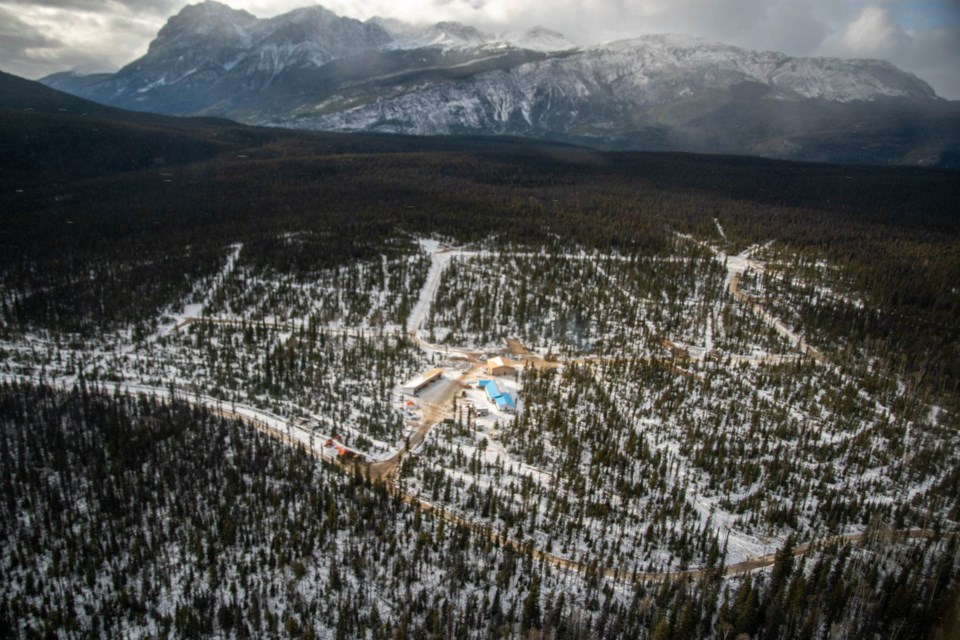Work on the $38.2 million caribou conservation breeding centre continues with an estimate that the project is now at approximately 40 per cent completion.
The foundations and framing of the administration building, the handling barn and the storage shed are complete and vapor barriers are intact.
Everything is going right on schedule, said Joshua Kummerfield, senior project manager with Parks Canada.
“Mechanical and electrical rough-ins inside the buildings are progressing (installing cables, conduits, and ducting). Windows and doors are being installed, and preparations are being made to install exterior siding and roofing.”
This winter, installers will get the metal roofing and siding on while work will continue on the interior mechanical and electrical installations, and finishing work including drywall, ceilings, and flooring.
So far, the winter has been mild, which has been advantageous on the construction front.
Mechanical thinning of the vegetation and pile burning are critical aspects of wildfire prevention as added measures to protecting the caribou within the pens in the future.
“Forestry work has also progressed with harvesters removing dead pine trees from the caribou pens, clearing vegetation on the perimeter fire guard and clean-up of woody debris ongoing,” Kummerfield said.
“The contractor will continue to clean up and burn fine woody debris across the site through the winter.”
ATCO is working on installing a buried high-voltage power line from the breeding centre towards Wabasso Campground along Wabasso Road (Highway 93A). This will continue in January 2024.
At this point, the site looks substantially as it will when the project is complete.
“It’s incredibly rewarding being able to see the project take shape on site after several years of preparation and planning,” Kummerfield said.
“With the forestry work progressing and the buildings in place, the site looks very different than it did a year ago. From the aerial images and walking up the alleyways, you can now get a sense of what things will look like when the construction is complete.”
The 65-acre construction site is located off Highway 93A near Athabasca Falls with approximately 55 acres of the total facility to remain forested for the caribou enclosures.
Public access on the first 1.44 kilometres of Geraldine Road has been restricted to ensure safety during construction. According to Parks Canada, Fryatt Trail is accessible from Athabasca Falls on a user-set winter route along the Athabasca River, once the wetlands and lake it crosses are frozen. This route is not a maintained trail, however.
Not all the preparation work can be called construction, however. Jasper National Park is in the early stages of developing a lichen collection program with a small group of Indigenous partners. Lichen is an essential part of a caribou’s diet. Although the site has some, it isn’t expected to last very long.
The Indigenous partners joined the caribou recovery team last month to begin discussions on what a lichen collection program for Jasper might look like.
Some of the Indigenous communities have much experience in organizing lichen collection programs. Together with Parks Canada biologist Carmen Richter, they are striving towards the first lichen collection in spring 2024.




